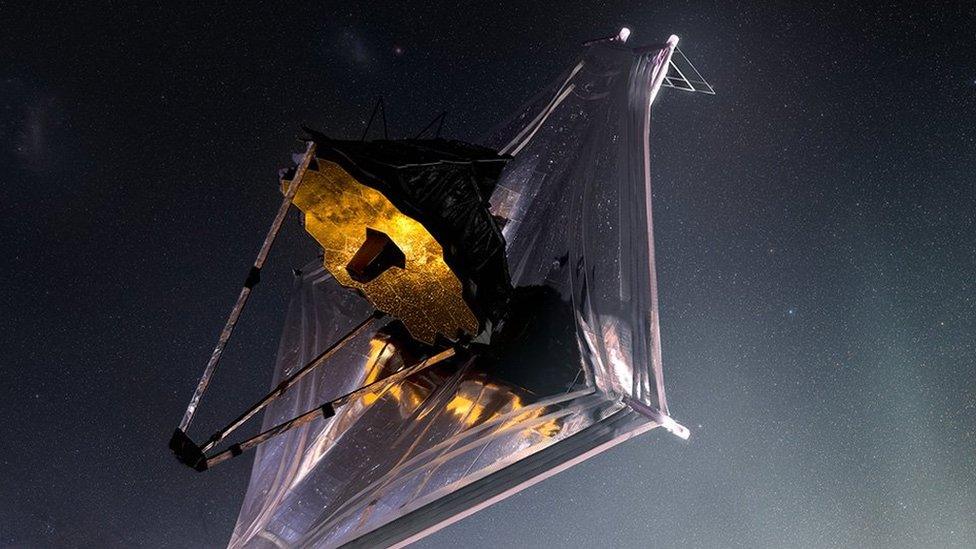James Webb Telescope: The birth of a star and the oldest galaxies captured
- Published
- comments

Artwork: The James Webb telescope
The James Webb telescope has taken more stunning images of our universe.
One, which looks like a fiery hourglass, shows the birth of a new star.
The other, captures the two oldest and most distant galaxies ever seen.
So strap in and get ready to rocket into a galaxy far far away as we check out the pics!
A star is born
This is what a star looks like at the earliest stage of formation
Happy birthday to this star which is forming around 450 light years away from earth!
At the centre of the hourglass is a protostar - an object that is massive enough to become a star but hasn't quite become one yet.
It's only around 100,000 years old which is actually pretty young for a star - our Sun in comparison is around 4.6 billion years old!
Scientists believe it's in its earliest stage of star formation, which they call class 0.
The protostar will continue to gather mass until it goes through a process called nuclear fusion and then it'll eventually become a fully-fledged star.
Oldies but goodies
This galaxy existed only 450 million years after the big bang
From one extreme to the other now - the James Webb telescope has also captured an image which contains the two oldest and most distant galaxies.
Both are seen really close in time to the big bang which occurred 13.8 billion years ago.
The findings in the image still need to be verified - checking if something is true - but if it is, these galaxies would've been formed around 450 and 350 million years after the big bang.
The previous record is held by a galaxy which existed 400 million years after the big bang and was discovered in 2016.
This galaxy is thought to have existed 350 million years after the big bang
These galaxies are tiny compared to our Milky Way though and are much brighter too.
One of the astronomers involved said: "These observations just make your head explode.
"It's like an archaeological dig, and suddenly you find a lost city or something you didn't know about."
The discovery will mean scientists should be able to find even more early galaxies much more easily.
- Published16 November 2022
- Published17 November 2022
- Published27 October 2022
